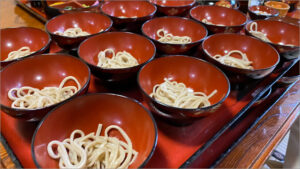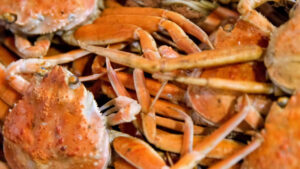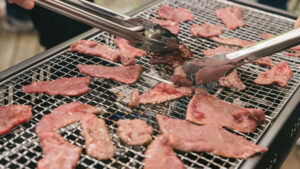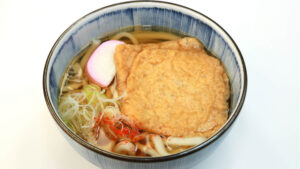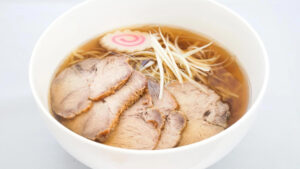Japanese sushi is loved around the world, but sushi restaurants use many unique terms that can feel like a hurdle for first-time visitors. This guide explains the terminology used by sushi chefs and regulars in clear Japanese–English pairs. It covers everything from ingredient names and ordering phrases to sushi-specific tools and etiquette. By the end, you’ll understand Japan’s sushi culture more deeply and enjoy it with confidence.
Contents
- 1 What Is Sushi Terminology? Understanding Its Meaning and Appeal
- 2 How This Guide Helps You Enjoy Japanese Sushi Even More
- 3 Useful Ordering Phrases at Sushi Restaurants (English & Japanese)
- 4 Basic Sushi Eating Etiquette for First-Timers
- 5 Categories of Sushi Terminology
- 6 Learn Sushi Terminology and Enjoy Japanese Sushi Even More
What Is Sushi Terminology? Understanding Its Meaning and Appeal
Sushi terminology refers to the unique words used by sushi chefs and in sushi restaurants. For example, “shari” means vinegared rice, and “murasaki” refers to soy sauce. These expressions originated from the street sushi culture of the Edo period and from chefs’ slang, designed to communicate quickly and concisely. For foreign travelers, knowing these terms makes it easier to understand menus and engage in conversation with chefs. Sushi terminology is more than just vocabulary—it’s a window into the depth of Japanese food culture.
How This Guide Helps You Enjoy Japanese Sushi Even More
By reading this guide, you can learn commonly used words and ordering phrases at Japanese sushi restaurants. You’ll also gain an understanding of different fish and sushi types, as well as proper eating etiquette, allowing you to enjoy sushi with confidence. Many foreign visitors feel uncertain when they can’t read the kanji or katakana on menus and aren’t sure what will be served. However, knowing basic terminology in advance lets you order smoothly and turns interactions with chefs and staff into a more enjoyable experience.
Useful Ordering Phrases at Sushi Restaurants (English & Japanese)
In Japanese sushi restaurants, it is common to order directly from the chef across the counter. Here are some frequently used phrases:
- 「おまかせでお願いします」 (Omakase, please) – Chef’s choice course
- 「○○を一貫ください」 (One piece of ○○, please) – Order one piece of a specific topping
- 「お会計お願いします」 (Check, please) – Request the bill
- 「お茶をください」 (Green tea, please) – Order tea (“Agari” in sushi terminology)
If you remember these phrases, you can order even without a menu. Practicing both the Japanese and English versions will give you extra confidence.
Basic Sushi Eating Etiquette for First-Timers
Sushi can be eaten with your hands or with chopsticks. The key is to hold it gently so the shari (vinegared rice) does not fall apart, and to dip the fish side, not the rice, into the soy sauce. If you dislike wasabi, tell the chef “Sabi nuki” (without wasabi) when ordering. Gari (pickled ginger) is for cleansing your palate and is not typically placed on top of the sushi. At the counter, casual conversation with the chef is part of the experience—simple greetings can lead to better service and recommendations.
Categories of Sushi Terminology
Sushi Ingredients & Toppings
- ネタ (Neta / Topping) – The fish or other ingredient placed on top of sushi.
- シャリ (Shari / Vinegared rice) – Rice seasoned with vinegar, sugar, and salt.
- トロ (Toro / Fatty tuna) – The fatty part of tuna, categorized as ōtoro (extra fatty) or chūtoro (medium fatty).
- 光り物 (Hikarimono / Silver-skinned fish) – Shiny-skinned fish such as mackerel and horse mackerel.
- シンコ (Shinko / Young fish) – Juvenile fish such as young sea bream or young horse mackerel.
Types & Forms of Sushi
- 軍艦巻き (Gunkanmaki / Battleship roll) – Sushi wrapped in seaweed with toppings placed on top.
- 握り寿司 (Nigiri sushi) – Hand-shaped sushi with a topping placed on top of shari.
- 巻き寿司 (Makizushi / Rolled sushi) – Sushi rolled in seaweed and shari with fillings inside.
- 手巻き寿司 (Temaki sushi / Hand roll) – A cone-shaped, hand-held sushi roll.
- 押し寿司 (Oshizushi / Pressed sushi) – Sushi pressed into shape using a wooden mold, common in the Kansai region.
Condiments & Tools Used in Sushi Restaurants
- ガリ (Gari / Pickled ginger) – Thin slices of ginger pickled in sweet vinegar.
- ムラサキ (Murasaki / Soy sauce) – A sushi restaurant term for soy sauce.
- ナミダ (Namida / Wasabi) – Another name for wasabi, literally meaning “tears.”
- ゲタ (Geta / Wooden tray) – A wooden serving tray for sushi.
Unique Customer Service Terms in Sushi Restaurants
- おあいそ (Oaiso / Bill, please) – A polite way to request the bill.
- あがり (Agari / Green tea) – Hot green tea served at sushi restaurants.
- おてしょう (Otesho / Small plate) – A small dish for soy sauce.
- 山 (Yama / Wasabi) – Another term for wasabi.
- おまかせ (Omakase / Chef’s choice) – Letting the chef choose your sushi selection.
Learn Sushi Terminology and Enjoy Japanese Sushi Even More
Knowing sushi terminology makes the experience at Japanese sushi restaurants far more enjoyable. The words introduced here are just a small sample, but by actually using them, you’ll remember them more naturally. In particular, terms like “Omakase,” “Gari,” and “Agari” are commonly heard in many sushi shops, so start practicing with these first. Understanding them in both Japanese and English will make ordering and conversation smoother, and help you appreciate sushi culture on a deeper level.



